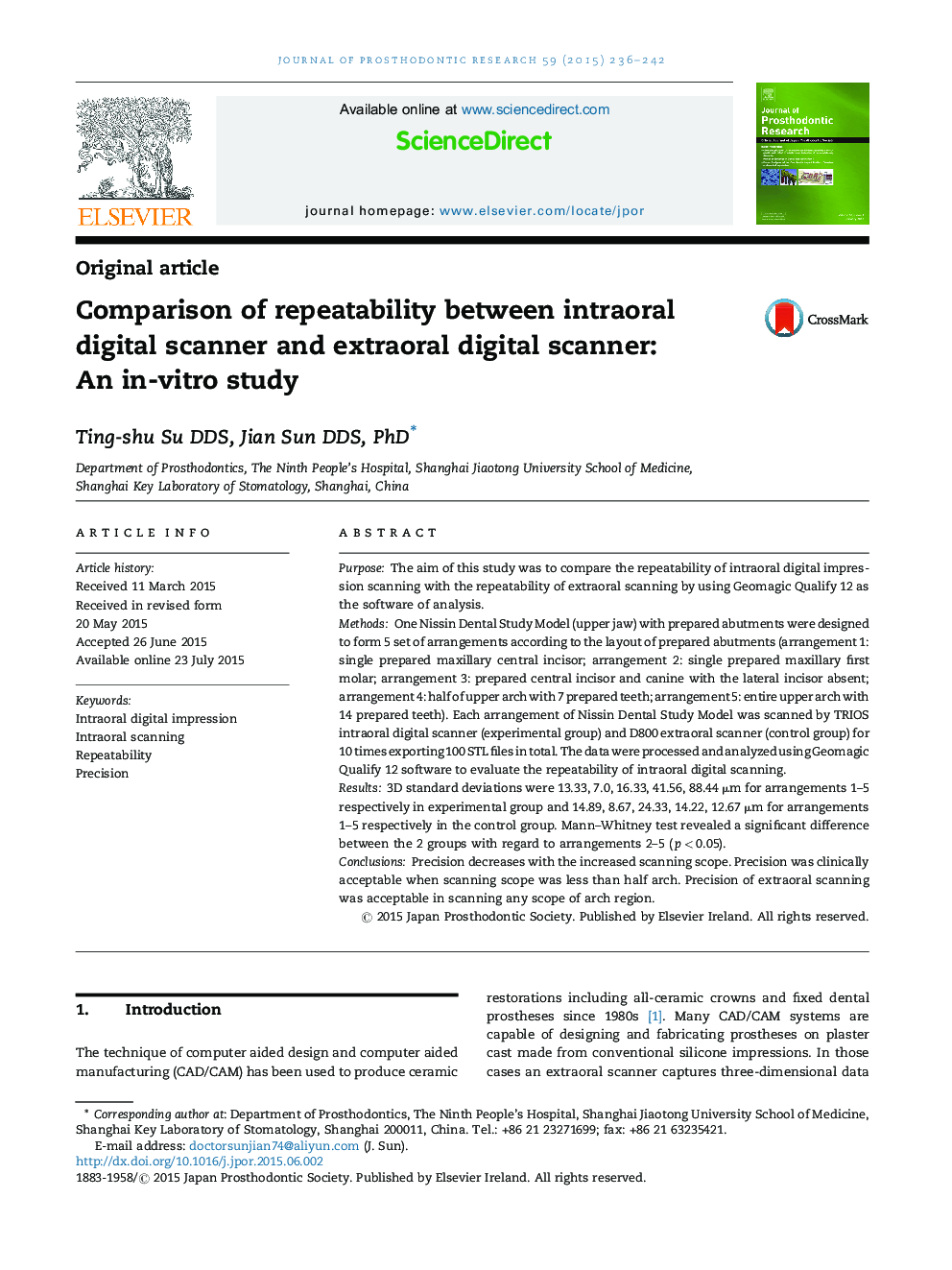| Article ID | Journal | Published Year | Pages | File Type |
|---|---|---|---|---|
| 3160612 | Journal of Prosthodontic Research | 2015 | 7 Pages |
PurposeThe aim of this study was to compare the repeatability of intraoral digital impression scanning with the repeatability of extraoral scanning by using Geomagic Qualify 12 as the software of analysis.MethodsOne Nissin Dental Study Model (upper jaw) with prepared abutments were designed to form 5 set of arrangements according to the layout of prepared abutments (arrangement 1: single prepared maxillary central incisor; arrangement 2: single prepared maxillary first molar; arrangement 3: prepared central incisor and canine with the lateral incisor absent; arrangement 4: half of upper arch with 7 prepared teeth; arrangement 5: entire upper arch with 14 prepared teeth). Each arrangement of Nissin Dental Study Model was scanned by TRIOS intraoral digital scanner (experimental group) and D800 extraoral scanner (control group) for 10 times exporting 100 STL files in total. The data were processed and analyzed using Geomagic Qualify 12 software to evaluate the repeatability of intraoral digital scanning.Results3D standard deviations were 13.33, 7.0, 16.33, 41.56, 88.44 μm for arrangements 1–5 respectively in experimental group and 14.89, 8.67, 24.33, 14.22, 12.67 μm for arrangements 1–5 respectively in the control group. Mann–Whitney test revealed a significant difference between the 2 groups with regard to arrangements 2–5 (p < 0.05).ConclusionsPrecision decreases with the increased scanning scope. Precision was clinically acceptable when scanning scope was less than half arch. Precision of extraoral scanning was acceptable in scanning any scope of arch region.
